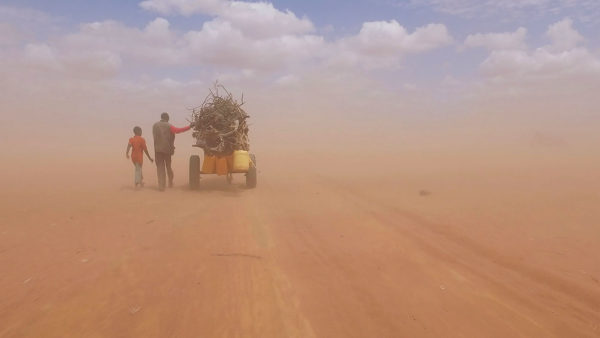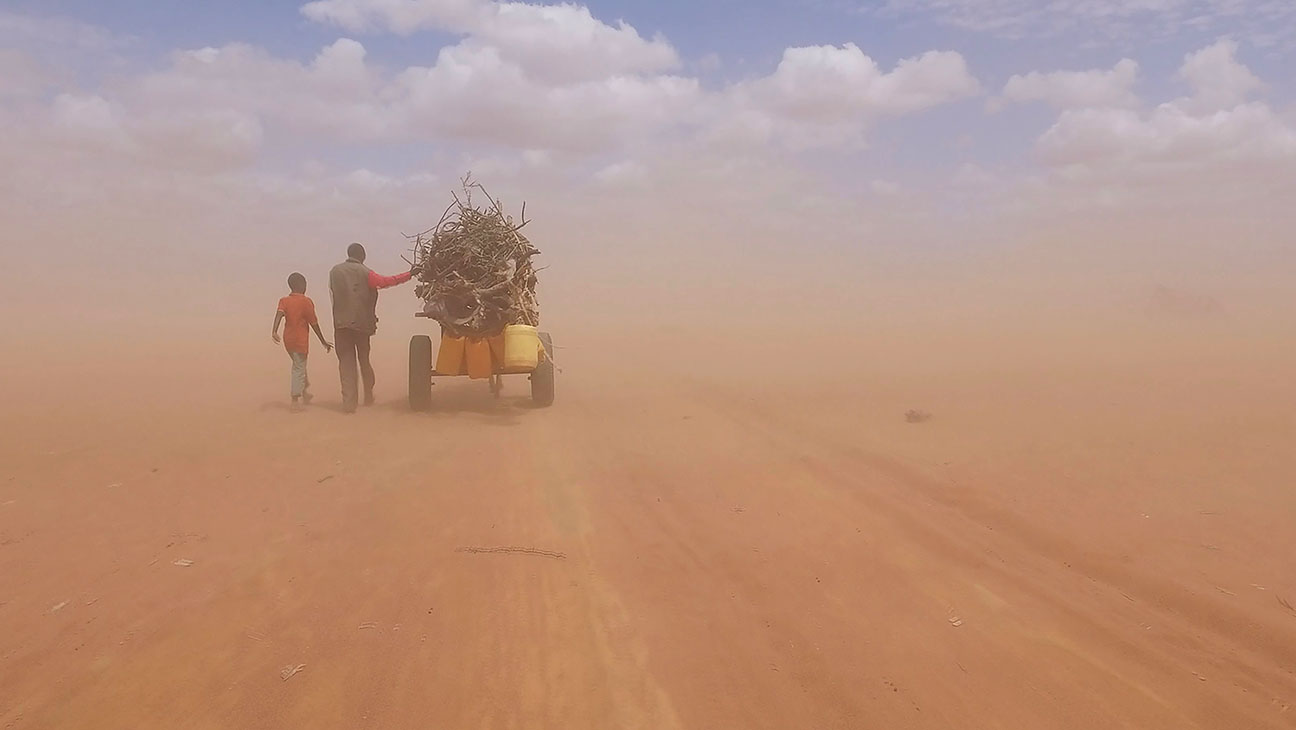
How does one begin to capture movement on a massive, global scale? How does one attempt to encapsulate the pain of displacement via the lens of an iPhone? How can refugees around the world cease to be numbers and instead be seen as individually relevant? In his two hour and 20 minute film “Human Flow,” the Chinese artist and director Ai Weiwei attempts to return a sense of individual humanity to the refugee crisis. In doing so, he asks us to remember our everyday privileges: having a house, a country, a homeland to call one’s own. Yet his project is neither to shame nor force supportive action. Instead, it is to articulate, with aesthetic clarity, a communal call for belonging and respect that is being sung by so many across the globe, right at this very moment. The question Weiwei asks us is simple: Can you hear it? Can you hear it now?
A verse from Turkish poet Nazim Hikmet (1902-1963) opens “Human Flow”: “I want the right of life, of the leopard at the spring, of the seed splitting open — I want the right of the first man.” As the lines fade, almost as if viewing a mirage or perhaps another adaptation of the hit nature series “Planet Earth,” Weiwei’s film begins with a white dove sailing diagonally across a blue square of ocean, symmetrical, beautiful and exuding calm. The dove is followed by another white protrusion: merging slowly across the sea, a block of beige fills the lower screen as a boat, filled to the brim with people wearing neon orange life vests, follows the bird’s prior path. In this, one could say that Weiwei’s first statement on the disruption caused by (largely forced) human migration is one of color, specifically that of orange. Yet Weiwei’s mirrored shots of animal and human migration also puts forth another concept: that migration is natural, and, as the film contends, is “the first right of man.”
Traversing 23 countries in a year — Afghanistan, Iraq, Israel, Turkey, Mexico, Germany, Italy, Bangladesh, Greece, France and more — Weiwei and his crew go the literal distance for a story that simply will not settle down. Walking across the Greek countryside only to be stopped at the borders of neighboring countries like Croatia, emerging into the beautiful geometric precision of Berlin, watching as an economy generates within a refugee camp—Weiwei proposes the simultaneous realities of human movement across the globe: It is not a singular event, it is not limited to one category of people, and it is happening everywhere.
Yet, while attempting to create a film focusing on the plight of so many, Weiwei (perhaps conflictingly) includes himself in much of it. There are a good many shots of the artist walking around various camps, lending a helping hand here and there, often stopping to speak to people who do not always understand him. “I respect you,” he tells a young man in battered clothing. “You are a good person.” His conversations, while brief, attempt to remind the refugee of his or her own individual importance, of his or her own capacity to do and be good.
In one of the most dramatic and scenic shots of “Human Flow,” Weiwei sits on a chair in the rain, shrouded in a black cloak, as someone cuts his hair. He blatantly stares into the camera, ignoring the movement around him and focusing solely on the lens. In the mass babble of the documentary, this shot is profound in its simplicity. It sticks with the viewer. Weiwei is the wise man you’ve envisioned consoling you. Reveling in this mystic aura, by portraying himself undergoing such an ordinary act — getting one’s hair cut — Weiwei transforms himself into a piece of living art, as his hair falls and his eyes remain unnervingly steady. Amidst the chaos, he is an ancient emanating calm.
One might wonder, though, why Weiwei would spend so much time including himself in a work about human migrants. One might think this selfish, or perhaps egotistical. Yet to have such thoughts would be to ignore Weiwei’s own tumultuous past. Born to a poet father sentenced into exile by the Chinese government, Ai grew up on the move. Before he became the artist so many know and love today, he endured police beatings, imprisonment and house arrest. Weiwei’s own movements have a history of being restrained. Thus, when he reaches out to a refugee anywhere, he does so with the knowledge of what it means to be displaced, disrespected and distanced. “I see this crisis,” he states, “as my crisis. I see those people coming down to the boat as my family. They could be my children, my parents … Like me, they are also afraid of the cold.” Importantly, this cold is not simply the frigid waves of a wintery Mediterranean, a snowy trek across France, or continuous states of blinding rain. This cold is a human infliction: it sears the heart and the mind, attempting as it does so to steal from the refugee a sense of integrity, dignity, any and all semblances of self-respect. It is a cold of rejection, unwantedness. It is a cold of a yawning human indifference.
Within this layered context, Weiwei’s interactions take on a greater importance. Every handshake is a knowing one, a warming one. Every meal served is an appreciated gift. To the large populations of peoples currently seeking refugee among other nations, in foreign lands, in “Human Flow,” Ai’s empathetic presence can only be a source of communal comfort. Indeed, he is a needed reminder that the soul, too, shall persevere.
By using the documentary film as an art piece to project such important sentiment, Weiwei purposefully defines the power of art as well. The human condition, Ai contends, is “part of an aesthetic judgment. Art has to be involved with the moral and philosophical and intellectual conversation. If you call yourself an artist, this is your responsibility.” For the self-proclaimed “lifelong refugee,” such a responsibility is, and has always been, inescapable. The ancient poets named it, the bird in flight calls it reminiscently, the pervasive color orange all but screams it. And Weiwei welcomes it, welcomes it all across the world, to all kinds of people undergoing all kinds of journeys. He welcomes it with heart, open arms, kind words. He meets such staggering pain with wise eyes, silently offering a thing of unequaled importance: warmth against the cold.
Ai Weiwei’s “Human Flow” is now playing at San Francisco’s Embarcadero Center Cinema and Berkeley’s Shattuck Cinema.
Contact Mac Taylor at ataylor8 ‘at’ stanford.edu.
